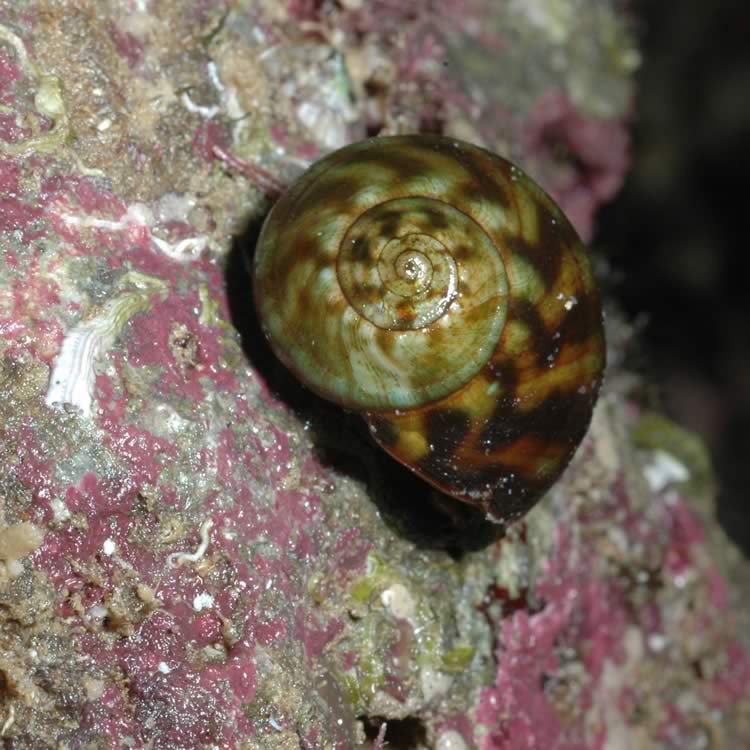Turban shell

Community type
Habitat type
Rocky reefs, kelp beds and inter-tidal zone
The turban shell has a greenish shell with shallow ridges and is also known as a periwinkle or warrener. It can be found in large numbers around the mid-tide mark on most shores, and is easily sighted in shallow rock pools at low tide. The operculum (‘trap door’ at the entrance of the shell) is smooth with a centrally located callus (hump).
Turban shells were one of the most popular shellfish for Tasmanian Aboriginals, evident from the contents of shell middens in the banks adjacent to the foreshore. Turban shells are still a popular food, and are sometimes harvested on a recreational basis for their fleshy foot. This is not recommended in the Derwent because of historic metal contamination – for more information, see our seafood safety.
Smashed turban shells are a common sight along the foreshore of Derwent rocky reefs. They are readily eaten by pacific gulls, with birds breaking the strong shells by dropping them onto rocks from a great height to access the fleshy body inside.
